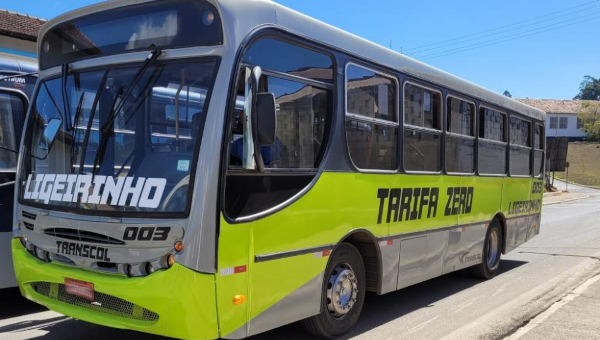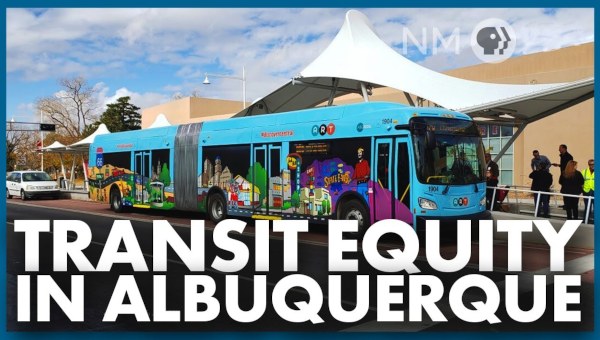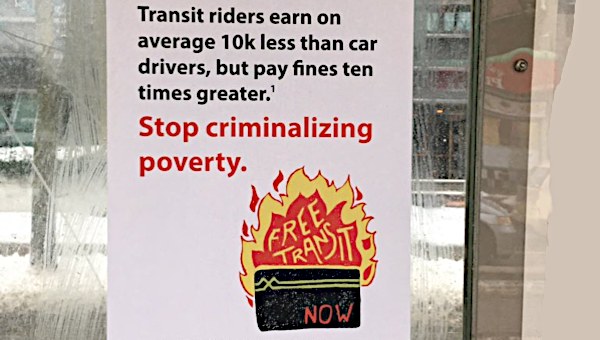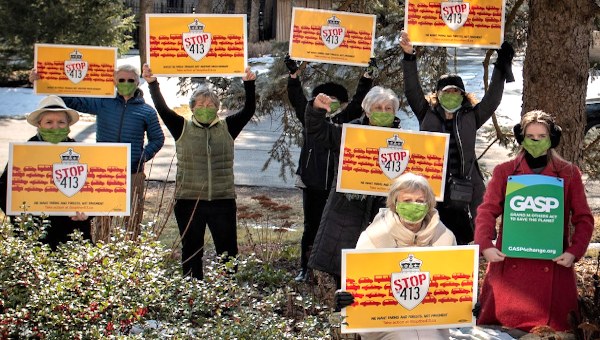The Traffic Hierarchy
One is not born a motorist, one becomes one.
Mobility and class are deeply entangled. Not only because one’s potential for mobility often has to do with one’s economic position, but also because a society built on today’s mobility paradigm – automobility – directly contributes to growing economic and social differences.
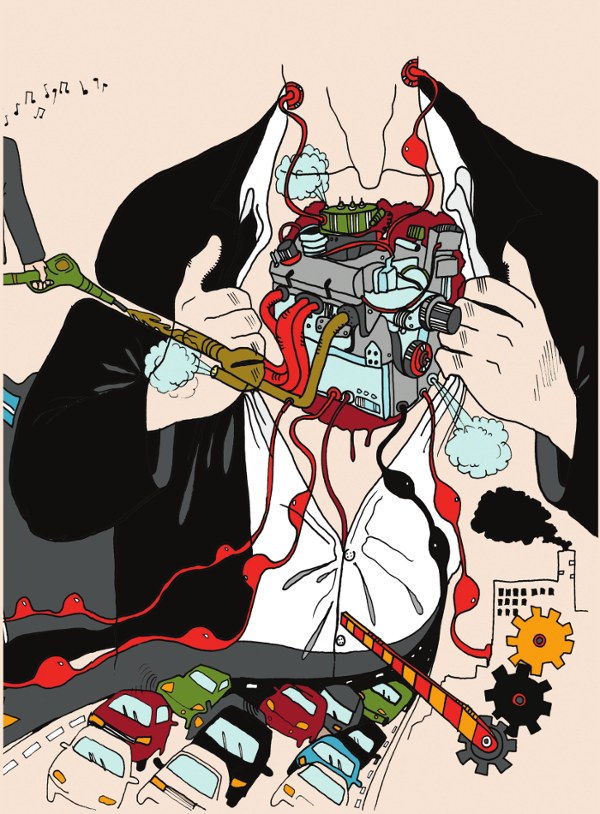
A society which puts the car on a pedestal quite obviously favours motorists. Another obvious fact is that white high-income and middle-aged men are an over-represented group among motorists. And the opposite is true among public transport users. But, a society that prioritizes motoring, and looks at ever-growing mobility as an almost magical recipe for development, increases the differences between its citizens and different parts in other ways as well.
The current traffic hierarchy, with the car on top and with public transport, bikers and pedestrians at the bottom, manifests itself in the fact that these means of conveyance are given different amounts of space and resources. With the car on top of the traffic hierarchy we get a society built on automobility: a world where our lives, to a far too great extent, are steered by cars.
This article is written to clarify how the current traffic hierarchy manifests itself and what its consequences are: a society built on automobility does not only pose grave danger from an ecological point-of-view, it also enhances the current notions toward greater economic and social segregation. By highlighting the problems with the current traffic hierarchy and starting to map out the edges of another way of planning and handling movement we hope and believe that we can also give some clues on how to handle other societal problems.
The car is pitching us toward each other. Who has not experienced the feeling of putting oneself in a car and suddenly being transformed into a motorist? The pure act of putting oneself behind the wheel seems, for almost everyone, to lead to egotistic behaviour, a situation where everyone is trying to gain something on someone else’s behalf. While driving a car, one’s fellow human beings (other drivers, public transport users, pedestrians, bikers) become nothing more than obstacles. Who cannot, honestly, recognize the almost aggressive and competitive feeling that the car produces in oneself? Since we do not want to encourage this kind of behaviour, and since we are confident that one is not born a motorist, but rather becomes one, we strongly believe that the risk of people becoming motorists has to be minimized.
Because of this we do not only want to change the order of the traffic hierarchy and take the car down from its pedestal. Rather, we want a society built on totally different premises. A society where no one is forced into motorism, whether passively or actively. A society where proximity and availability to what people need to satisfy their needs and desires are put at the forefront.
Automobility
Cruel town, it’s a cruel town / Cold people cruel town
Cruel town, it’s a cruel town / If you fall, you stay down
Cold city, cruel system / Nothing’s made for people. —Broder Daniel
Automobility is a concept used to interpret and describe those institutions and practices that organizes, supports and shapes the cars movement through, and its impact on, our societies. It is also the name of the discourse used to legitimize the car as society’s engine of progress by connecting it with ideas about freedom, development, individuality, and independence. Automobility is, in short, one of the founding socio-technological institutions through which modernity is organized.
Automobility is a compound of the words autonomy and mobility, and of course something of a pun since auto might as well be read as automobile. In this context it shall be understood as connected to autonomy, and as a concept to describe our societies view on mobility and autonomy: you achieve independence through mobility, and true mobility can only be achieved independently. Ideas strongly connected to the liberal ideology that proclaims us all as individuals – free to choose our own way of life – an ideology that in its most extreme form denies the very existence of society. But, just as the idea of the free individual is created and maintained by a specific formation of society, the idea of automobility needs to be produced and maintained. Without roads, the auto-industry and the oil-industry no one would use cars. Automobility is a self-contradiction in so far as motorists are not at all free to choose their own ways, but rather have to drive on roads built and planned by politicians, to workplaces, and from homes, located in specific places for political and economical reasons.
It is rather ironic that the car to such great extent has come to be known as the key to freedom and individuality, that it has become something of the holy grail for modern liberalism, when it is in fact so interlocked with a range of public as well as private systems of control. A countless number of regulations have to be in place to make mass-motoring function even as badly as it does today: how fast you can drive, where you can drive, in which direction you should drive, where you can stop, how much your car can emit and how safe it has to be are just a few examples of the regulations surrounding you every time you seat yourself in a car. To make this function, an enormous regime of control has to be in place to discipline drivers as well as non-drivers to behave accordingly and obey the rules. The freedom on the road has developed hand-in-hand with a deepening of the control of movement.
The current regime of automobility carries a number of unsolvable, and inherent, destructive tendencies.
Mass-motoring is congestion: automobility is based on a society which subsidises and encourages all of its citizens to travel by car, but if everyone does that automobilty soon turns into immobility. Traffic jams and gridlocks are the logical consequence of a car-society. Mass-motoring is its own worst enemy. The motorists freedom requires mass-motoring, but at the same time mass-motoring is intruding on the motorists freedom.
Mass-motoring is over-exploitation: our climate, our natural resources, ourselves, our cities, even the whole geo-political system has been hit by acute crises because of mass-motoring. The climatic changes gallop in tune to the roaring of engines, our cities are consumed by cars that leave less and less space for those living in them. Finite oil production and peak oil lead to geopolitical crises, even wars, to maintain access to cheap oil. Not to speak of the more than 1.2 million people killed every year as a direct result of traffic accidents.
It is important to call attention to the fact that the problems mentioned above are not some occasional disruptions in an otherwise well-functioning system. Because it is in fact the opposite: this is the normal, day-to-day, functioning of the system. Our roads and cars, built to support automobility, are killing over 3,000 persons every single day. But when was the last time you heard someone in power criticising mass-motoring as a system? That someone in the current political climate should proclaim a war on motoring appears totally unrealistic. Even though traffic safety of course is something good, it is also a way of trying to solve a problem by curing its symptoms instead of its causes. Car related deaths are apparently not seen as a political issue, rather there is a total resignation to these murder machines swarming our planet.
It is quite obvious that automobility is neither rational nor, in reality, a well-functioning system to organize movement. But that is not enough – even on a conceptual level it is, in itself, an impossibility. What is made out to be a system of freedom and independence is in fact based upon an intricate web of control.
Public mobility
They paved paradise, and put up a parking lot. —Joni Mitchell
Even though the concept of automobility is strongly connected with mass-motoring it is important to understand how these thoughts affect all parts of how we plan our societies. Automobility is based on an interpretation of the car-society, but can and should be used to understand how we view the individual and her rights and possibilities to move around. In a society so fixated with the idea of the free and autonomous individual it can be hard to see how so many of our notions are shaped by this idea. This makes it even more important to really grasp the concept of automobility and apply it when planning society. The concept of automobility is, when used correctly, a great tool to analyse society and to understand how traffic planning can be used to conduct radical and green politics.
To use a hands-on example on how automobility can be used as a radical tool of interpretation we turn to the debate around pod cars, but the same arguments and interpretations can of course be used to understand other subjects as well.
To summarize the discussions about pod cars: we acknowledge a problem, car traffic stands for a growing share of our carbon dioxide emissions and contributes greatly to the deterioration of our cities. Public transport is said to be the cure for cars, but how do we get people to use it? Our gut feeling often tells us that to control motorism we should adapt the public transport to the needs of the motorist – when it is in fact just those needs that are the problem. Pod cars might, with an emphasis on might, entice some people to leave their car at home. But will they change the structure of our cities? Hardly!
It is not so surprising that certain people from the green parties, liberals and the pod car industry advocate pod cars and by doing so enforce the idea of automobility. To detach the idea of the individual from a broader context – society – is a liberal project. But a radical movement that strives for real change must have as a virtue to always try to think one step further. And someone who does not challenge the liberal idea of automobility is not someone who wants to travel somewhere unseen.
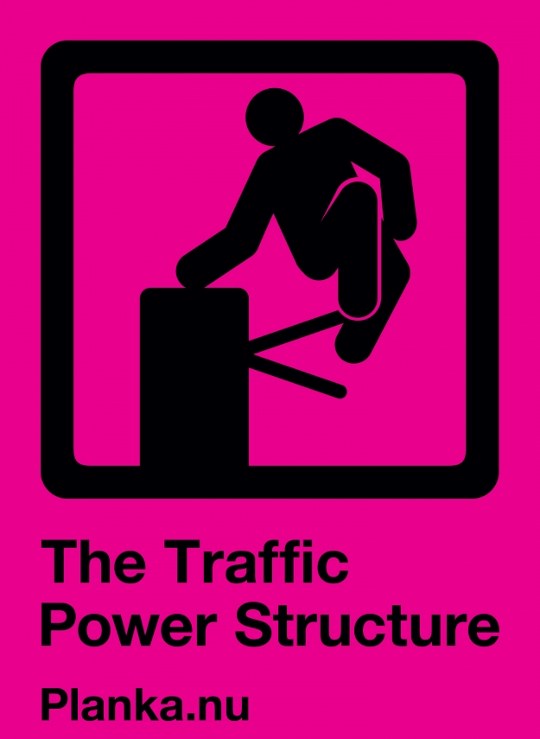 The idea of the free individual with power to rule over his own life is a product of a certain society, and so is the idea of automobility. It is dependent on the politics that creates it, defines its limits and masks its inherent antagonism: namely that your mobility is based on somebody else’s immobility. The car is only the key to freedom as long as society is left uncounted for, hence all car adverts taking place in the desert or on empty mountain roads.
The idea of the free individual with power to rule over his own life is a product of a certain society, and so is the idea of automobility. It is dependent on the politics that creates it, defines its limits and masks its inherent antagonism: namely that your mobility is based on somebody else’s immobility. The car is only the key to freedom as long as society is left uncounted for, hence all car adverts taking place in the desert or on empty mountain roads.
Instead of changing public transport to fit the needs of the motorist we should expand it. Instead of trying to individualize it we should strengthen its function as the social hub our lives and society revolves around.
If we, as a modern, green and radical left want to change our societies we have to challenge our heritage of putting too much faith in “development.” We must challenge ideas such as that one car each should have something to do with freedom or equality. We have to begin thinking about how to transform our societies in a direction where less mobility is needed. This does not mean that we should stop moving, but that repetitive, meaningless commuting should decline and that we should try to organize the travelling required from the knowledge that we all, together, constitute society.
A start is not to just accept, but to happily affirm the public in public transport.
Now we have come so far as to have identified a huge problem in how we view the relation between traffic, politics and cities, but how should we move on to solve this problem? In the long run we have to move away from today’s mobility paradigm and replace it with something like a proximity or accessibility paradigm. Instead of having one road administration and one rail administration we could introduce an accessibility administration which would look at the broader picture when developing or rebuilding cities, so that availability to what people need to satisfy their needs and desires are put at the forefront. An administration that does not see mobility as something good or desirable in itself.
This is something that will take a long time to see the impact of, and demands big changes in the way we plan and build our cities. But in the mean-time there are a lot of smaller changes to be done to reduce car-traffic and increase the share of trips made with public transport, on foot or by bike.
One suggestion, put forward by a commission appointed by the American congress is to complement the gasoline tax with a vehicle miles traveled tax. A tax which could be used to show that it is not only the emissions from cars that is the problem, but rather that the problem lies in the sole act of driving.
We can learn from Copenhagen, where they have gradually removed parking lots and car lanes, which has rendered a reduction in car traffic that has been easy for drivers to cope with since they have been given a reasonable amount of time to change their ways of getting around. While the number of cars has been reduced, the number of people moving around in the city centre has not. By reducing the amount of parking spaces with around two percent per year space has been freed to use for human activities such as pedestrian streets, bike lanes, public squares and street side cafes.
Other substantial, cheap and relatively easy to implement measures to reduce car-traffic are: congestion charges (given that the surplus is invested in public transport), an expansion of the network of pedestrian streets and less car lanes to make room for separate lanes for buses and bikes. We should also aim to better control illegal parking and build or expand systems of public bikes to integrate them with public transport.
Another way of making public transport more attractive to motorists is to make it fare free. By doing this, one also demonstrates how public transport, in itself, is sort of the antithesis to automobility. By making public transport free at the point of entry it takes on a qualitatively different shape, it becomes a true public space, a social and common wealth for all to use. Where the car is a private space and every new driver becomes an obstacle for the other motorists, public transport is a social space which grows and becomes better the more people are using it.
By making public transport free and available for everyone we are truly realising the potential for public transport as common space. When we are emphasising the public in public transport we are doing so because we love to live with people around us. But also because a living public space is a pre-requisite for people to feel safe and to use it: individual vulnerableness diminishes when we are surrounded by other people. Public transport should be an integrated part of the society we all are living in, and should therefore reflect its plurality of social relations and be available and inviting to all of its citizens.
Accessibility
Individual freedom in itself, without connection to your community, your family
and your friends, ends up being empty and meaningless.
I realized that those people I put in that car fifteen years ago where out there
trying to make a connection. —Bruce Springsteen
Now that we have identified the problems with the current mobility paradigm and shown what measures to take to start to replace car-traffic with public and social ways of moving around it is time to discuss the bigger question: how do we change our way of planning from mobility to accessibility?
First and foremost, we must recapture the belief in politics. We need to regain public control over our cities so that we, together, can decide to say no when private interests want to exploit and build in ways that will ruin the possibilities of planning for a good city structure. We must revitalize our local communities that have been totally shredded by mass-motoring, separating of functions, privatization and segregation. But without a belief in the political capacity to heal these wounds we can not even start to dream of a different city.
An important step is to fully integrate public transport in the city planning, since both of them affect and are affected by each other. By controlling the city’s spatial expansion we get the opportunity to minimize the number of necessary trips that have to be taken, and also make sure that the public transport becomes a viable option for all citizens.
People speak a lot about the “flâneur city” today, more or less everyone seems to agree that our inner cities are in acute need of redevelopment. Less cars, more trams, bikers and revitalized public space are on the agenda. There is of course nothing wrong with this, but why is the focus always on the inner city? Most of us are living in the suburbs and the change has to start where we live. What we need is not more Jan Gehl-inspired changes of the inner cities occupied by the urban middle classes – or rather – those changes will happen anyways, so let us concentrate on other things.
To be able to defy the current mobility paradigm and start to build cities where everyone’s access to the good things in society is put at the centre, we have to start in our own suburbs. Of course we should learn from the best practices of inner city redevelopment, but the challenge in changing our suburbs are so much bigger than to make a few inner city pedestrian streets.
Exactly where to start is of course a question related to time and place, but it has to be connected to us living in the suburbs and our needs and wants. Lately we have seen a surge in community organizing as a response to the closing and externalization of local services. To cut down on public services such as schools as well as local stores is a logical consequence of a society obsessed with movement. That is also why the fight for living communities is so inspiring, and we should aim to develop and connect every single struggle for a local swimming hall or kindergarten, and understand them as struggles for everyone’s opportunity to satisfy their basic needs and desires where they live. Seen in this way all of these disparate attempts of community organizing can also be understood as working against automobility: as fights to stop the process where more and more local services are shut down with the motivation that people can transport themselves to similar services in other places.
By fighting for small improvements in the suburbs where we live we are also fighting against our dependency on transport. But just as much as this is a question of mobility, it is also a question of class. By recovering our local centres we can stop the current development where quality is segregated to inner cities. By introducing a principle of proximity for public services we are in extension making the overall quality of them better. Instead of making it possible for the better-off to pay extra and commute to a better school, a revitalization of proximity makes everyone organize for improvement where they live. In simple words: by letting the middle class in the residential area share schools and other public services with people from the blocks of rental apartments we are guaranteeing a raise in quality for everyone.
All of these changes also contributes to making our suburbs more lively even during those times of day when people are not going to or from work. Livable suburbs reduce our travelling needs and make us feel more safe than any private security guards, gated communities or surveillance cameras can do. The main source of feeling safe is to have people around us, it is actually no more complicated than that.
By filling our cities with open and welcoming public spaces we are filling our cities with life. By filling our cities with life we are making ourselves more open and welcoming. Changes in our cities render changes in our behaviour toward each other.
Instead of looking at commuting and other trips as something we “have to do,” something separated from other activities, we should see how they are connected with our means of living good lives. A city disintegrated by meaningless and imposed movement are also disintegrating our lives. A broken town is shattering our lives into different, disparate, pieces and alienates us from each other and ourselves. A society where everything has to have its own space and its own time – sleep, work, learn, play, shop, socialize – diminishes our ways of living.
This separation of functions may, just like the division of labour, be the dream of a planner or a manager, but it is time to face the fact that we have let this go way too far. Because who does not want to be able to play, learn and work at the same time – and in the same place? •
Literature
- Böhm, Jones, Land & Paterson (2006): Against Automobility.
- Gehl & Gemzøe (2004): Public Spaces Public Life.
- Gorz (1973): The Social Ideology of the Motorcar.
- Illich (1973): ”Energy Crisis” in Energy and Equity.
- National Surface Transportation Infrastructure Financing Commission (2009): Paying Our Way – Executive Summary.
- Stridsberg (2004): Dödskallt stål.
Planka produced this pamphlet in 2010.


